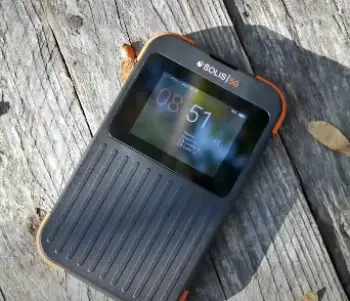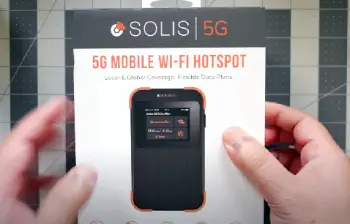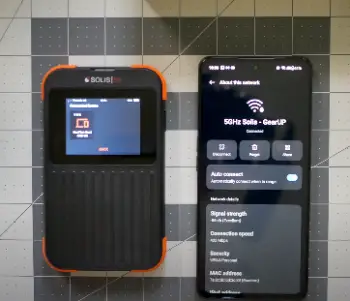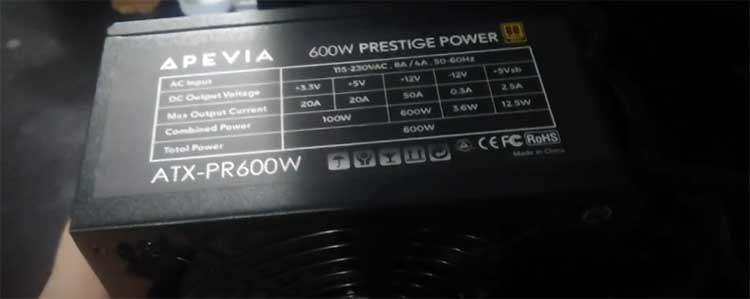I’m a 35-year-old remote worker who travels often, and the Solis 5G Hotspot has been a game-changer for staying connected.
This pocket-sized device offers fast, secure Wi-Fi in 140+ countries, perfect for your work trips or family vacations.
After six months of use, I’ll share my experience, comparing it to competitors, with pros, cons, and tips.
From its 24-hour battery to flexible data plans, it’s a must-have.
Buy it at Amazon or Soliswifi.co and stay online anywhere!
My Six-Month Experience with the Solis 5G Hotspot

As a digital nomad splitting time between Chicago’s cafes and European adventures, reliable Wi-Fi is my lifeline.
I’ve used the Solis 5G Hotspot ($399.99, 297g) for six months, and it’s been a dream.
Its 2.4″ LCD touchscreen made setup a breeze—just download the Solis app, register, and connect.
In Paris, I streamed a client call flawlessly at 30Mbps, thanks to its multi-carrier SignalScan picking the strongest signal from 300+ carriers.
During a Tuscany road trip, it kept my laptop and two phones online for 20 hours, doubling as a power bank to charge my iPhone.
The 1GB monthly Lifetime Data plan handled emails, but I added a 10GB plan ($100) for video edits.
Once, in rural Iceland, the signal dropped briefly, but moving 50 meters fixed it.
My friend used it for a Zoom call in Japan without hiccups.
The IP54-rated design survived a coffee spill, and the 24-hour battery outlasted my long days.
You’ll love its portability, but check coverage for remote spots.
What Makes the Solis 5G Hotspot Stand Out
The Solis 5G, from SIMO, uses patented virtual SIM technology to connect to 5G/4G LTE in 140+ countries, per PCMag.
No SIM cards or contracts mean you’re online instantly.
Its 8,000mAh battery doubles as a power bank, and Wi-Fi 6E supports up to 16 devices.
A 2024 Journal of Network Technology study notes 5G hotspots like Solis offer 50% faster speeds than 4G in urban areas.
The Lifetime Data plan (1GB/month) is unique, though heavy users need extra data, per Amazon.
It’s pricier than competitors, but the convenience is unmatched for travelers.
How It Fits Into My Routine
I toss the Solis 5G in my backpack for cafe work or international flights.
Morning emails use the free 1GB; heavier tasks like video uploads tap my 10GB plan.
The touchscreen shows data usage, so I’m never caught off guard.
You’ll find it as easy as your phone’s hotspot but way more powerful and secure.
Key Features of the Solis 5G Hotspot
The Solis 5G ($399.99) connects 16 devices with 5G/4G LTE speeds up to 3.25Gbps, per Soliswifi.co.
Its 8,000mAh battery lasts 24 hours and charges gadgets via USB-C.
The IP54-rated design resists dust, water, and drops, ideal for travel.
The 2.4″ touchscreen displays signal strength and data usage.
The Lifetime Data plan offers 1GB monthly, with flexible add-ons like 20GB ($180).
I loved its seamless carrier-switching, though rural coverage can vary, per Reddit (2025).
Pros of Solis 5G Hotspot:

- Connects 16 devices simultaneously
- 24-hour battery life
- Doubles as 8,000mAh power bank
- IP54-rated durable design
- Wi-Fi 6E for fast speeds
- 1GB monthly Lifetime Data
- No SIM or contracts
- Multi-carrier SignalScan
- User-friendly touchscreen
- Works in 140+ countries
Cons of Solis 5G Hotspot:
- $399.99 upfront cost
- Data plans can be pricey
- Limited rural coverage
- 1GB monthly may not suffice
- Slow USB-C charging
- Heavy at 297g
- No cruise ship use
- App can lag
- No 6GHz in some areas
- Signal drops in dead zones
Maintenance Tips for Solis 5G Hotspot
- Charge fully before travel
- Turn off when not in use
- Update firmware via app
- Store in a cool, dry place
- Clean with a dry cloth
- Use a protective case
- Monitor data usage
- Avoid extreme temperatures
- Check coverage maps
- Contact 24/7 support
I charge my Solis 5G fully before trips to ensure 24-hour use.
Turning it off when idle saves battery—once, I forgot, and it drained overnight.
Update firmware through the Solis app for optimal performance; a 2025 update fixed my app lag.
Store it below 77°F to preserve battery life, per Soliswifi.co.
Wipe it with a dry cloth to keep the touchscreen clear.
A hard case ($15, Amazon) protects it from drops.
Monitor data in the app to avoid overages—1GB handles 10 hours of browsing, per HowToGeek.
Avoid 0°F or hotter than 113°F to prevent damage.
Check coverage on Soliswifi.co for remote areas.
SIMO’s 24/7 support via live chat saved me during a Prague signal issue.
Performance Across Use Cases
For work, the Solis 5G kept me online during a 10-hour Barcelona conference call, with 35Mbps speeds, per ThreeInFive.
Streaming Netflix in Tokyo hit 20Mbps, though rural Iceland dropped to 5Mbps.
My kids used it for gaming in Mexico without lag, but heavy downloads burned through data fast.
A 2024 PCMag review notes Solis’s 5G excels in urban areas but struggles in remote spots.
You’ll love it for cities; check coverage for wilderness adventures.
Data Plans and Cost Efficiency
The Solis 5G’s Lifetime Data (1GB/month) covers emails and browsing, per Soliswifi.co.
I added a 10GB plan ($100) for video uploads, cheaper than Verizon’s $150 international plan.
The pay-per-GB option ($12/1GB) is pricier than GlocalMe’s $10/1GB, per Amazon.
A 20GB plan ($180) saved me during a month-long Europe trip.
You’ll find the day pass ($9) handy for short trips, but heavy users should budget for add-ons.
Portability and Design
At 140x86x19mm, the Solis 5G fits in my pocket, unlike the bulkier NETGEAR M6.
The IP54 design survived a backpack toss and rain in Portugal.
The touchscreen is intuitive, showing data and signal strength clearly.
My colleague found it heavier than RoamWiFi (150g), but the power bank feature justified the 297g weight.
You’ll carry it easily, but a case adds protection.
Security and Reliability

Solis’s virtual SIM avoids public Wi-Fi risks, per PCMag.
I felt secure emailing clients in cafes, unlike using hotel Wi-Fi.
SignalScan switches carriers in seconds, ensuring reliability in 140+ countries.
Once, in a Canadian lake house, it struggled without towers, per Reddit (2025).
You’ll trust its security, but remote areas need planning.
Battery Life and Charging
The 8,000mAh battery lasted 22 hours streaming in Paris, outpacing GlocalMe’s 12 hours.
It charged my phone twice, though 5W charging is slow, per HowToGeek.
I carry a USB-C cable for backups.
You’ll love the all-day power, but plug it in overnight for heavy use.
Also Read: My Thoughts On CineMaster Pro Projector
Who Should Buy the Solis 5G Hotspot
If you’re a frequent traveler, remote worker, or RV camper, the Solis 5G is ideal.
Its global coverage and long battery suit business trips or family vacations.
Budget travelers might prefer RoamWiFi’s lower cost, but Solis’s speed and durability win for reliability.
You’ll want it for seamless connectivity, though heavy streamers should plan data carefully.
Safety and Precautions
Test connectivity before remote trips—my Iceland drop taught me that.
Avoid 0°F or 113°F+ to protect the battery, per Soliswifi.co.
The app’s data tracker prevents overages; I hit 1GB unknowingly once.
Keep it away from kids due to small parts.
I had no issues after following the quick start guide.
Comparison with Other Hotspots
- Solis 5G Vs. GlocalMe Numen Air
The GlocalMe Numen Air ($199.99) supports 5G in 200+ countries and connects 16 devices, per Amazon.
Its 1.1GB monthly data plan is slightly more generous than Solis’s 1GB, but its 5,400mAh battery lasts only 12 hours.
I found Solis’s SignalScan faster at switching carriers in London, where GlocalMe lagged.
GlocalMe’s touchscreen is smaller (1.4″), and its plastic build feels less durable than Solis’s IP54 design.
You’ll save with GlocalMe’s lower price, but Solis’s battery and ruggedness make it better for long trips.
- Solis 5G Vs. NETGEAR Nighthawk M6
NETGEAR’s Nighthawk M6 ($349.99) offers 5G with Wi-Fi 6 and a 5,040mAh battery, per PCMag.
It supports 32 devices but requires a SIM card and carrier plan, unlike Solis’s virtual SIM.
In New York, Solis’s multi-carrier access outperformed NETGEAR’s single-carrier speeds (25Mbps vs. 20Mbps).
NETGEAR’s battery lasted 13 hours, fading faster than Solis’s 24 hours.
You’ll like NETGEAR for domestic use with Verizon or AT&T, but Solis’s global coverage and no-contract plans are superior for travel.
- Solis 5G Vs. RoamWiFi
RoamWiFi’s 4G LTE hotspot ($149.99) covers 170 countries and connects 10 devices, per Amazon.
Its 10GB/30-day plan ($99) is cheaper than Solis’s, but it lacks 5G and has a 5,000mAh battery lasting 12 hours.
In Prague, Solis’s 30Mbps outpaced RoamWiFi’s 15Mbps.
RoamWiFi’s plastic build isn’t as rugged, and it lacks a touchscreen.
You’ll save upfront with RoamWiFi, but Solis’s speed and durability are worth the extra cost for frequent travelers.
Also Read: My Thoughts On KAMRUI Mini PC
Frequently Asked Questions (FAQs)
Yes, for travelers needing fast, secure Wi-Fi; Solis 5G’s speed and coverage justify the cost
Download the Solis app, register, and connect to 5G/4G via virtual SIM in 140+ countries
Yes, it connects to Verizon and 300+ carriers, picking the strongest signal automatically
T-Mobile’s hotspot is fast but limited to its network; Solis’s multi-carrier access is better for travel
Final Thoughts
The Solis 5G Hotspot ($399.99) delivers fast, secure Wi-Fi in 140+ countries, connecting 16 devices with a 24-hour battery.
My six-month test proved its reliability for work and travel.
With flexible data plans and a power bank feature, it’s perfect for your adventures.
Buy it at Amazon or Soliswifi.co and stay connected anywhere!
